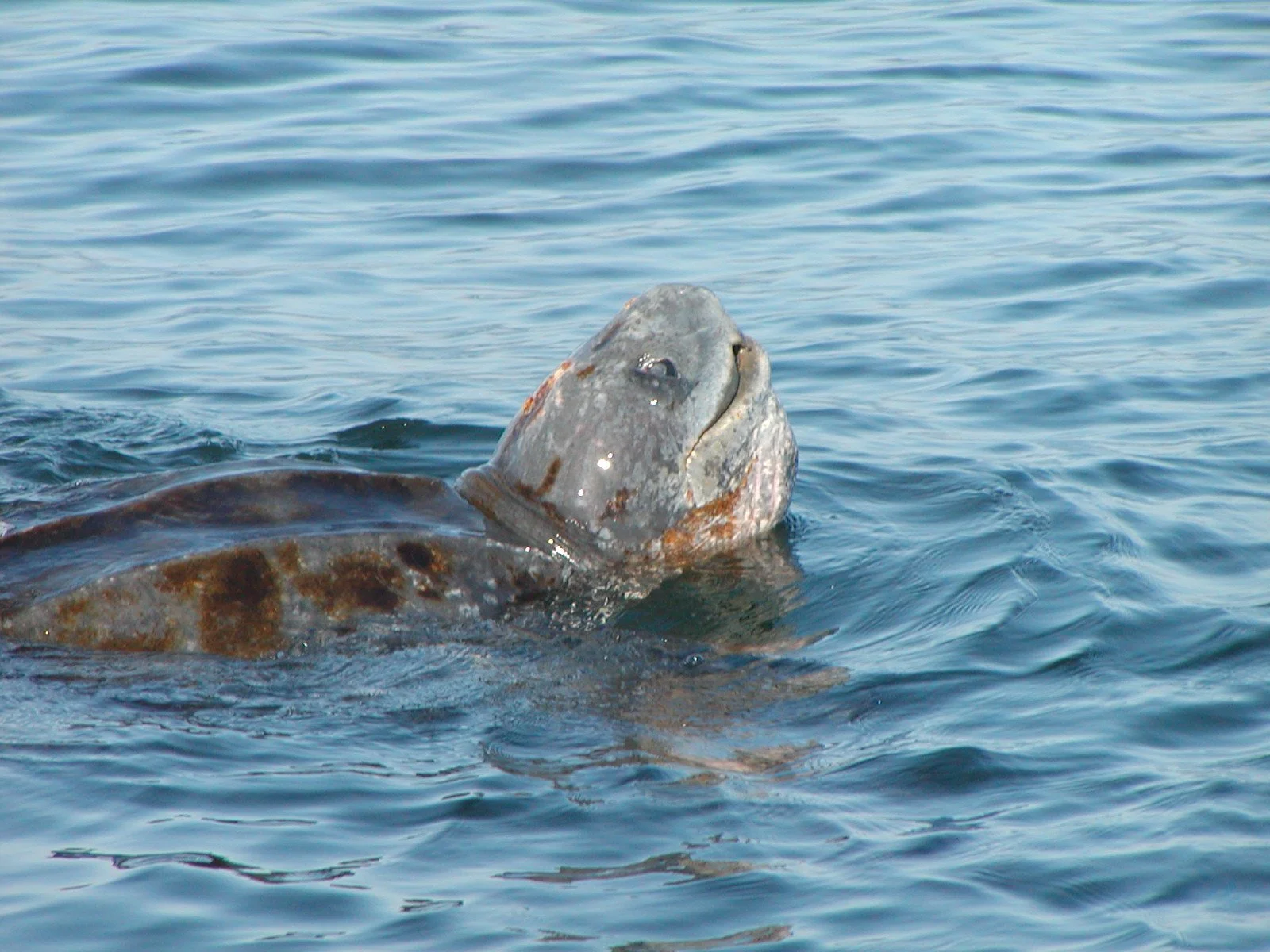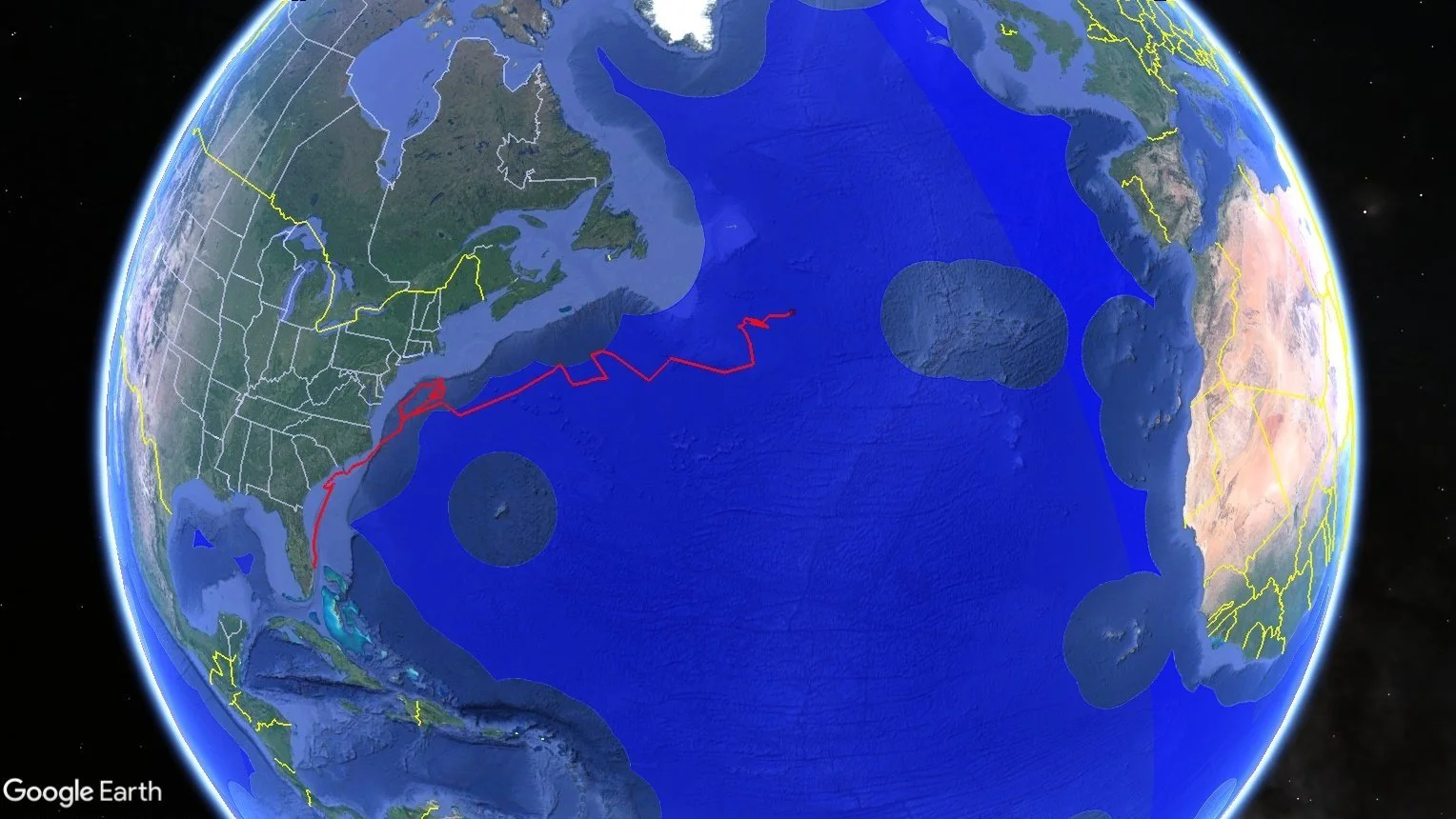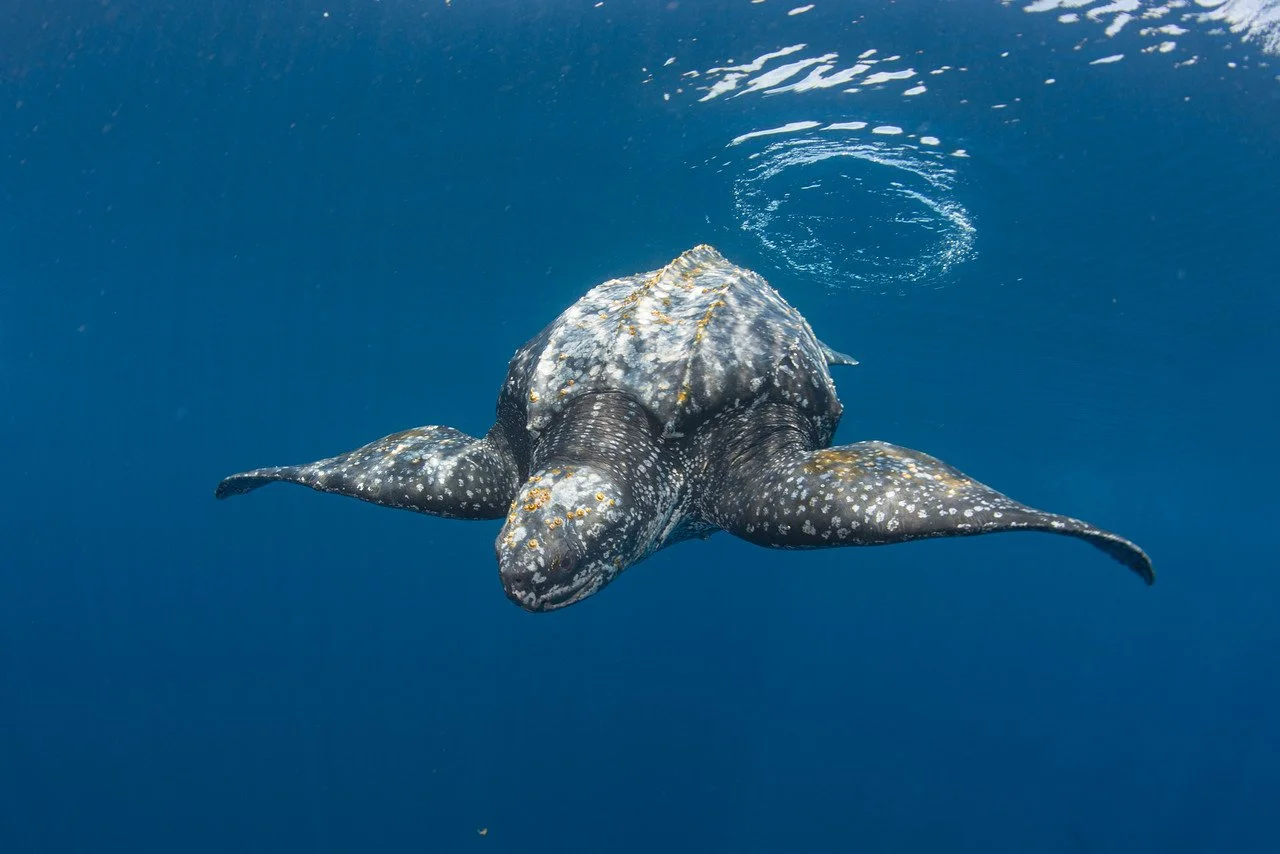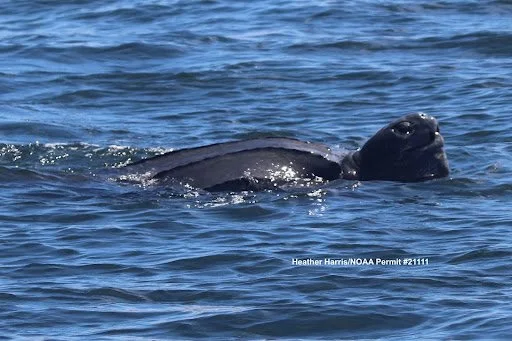Protecting Endangered Leatherbacks
Leatherback sea turtles (Dermochelys coriacea), the largest of all sea turtle species, are a flagship conservation species and a key component of healthy marine ecosystems. They migrate thousands of miles across ocean basins to feed on jellyfish, and help maintain healthy and productive fisheries around the world by preventing devastating jellyfish blooms, which can decimate the fry of commercially important fish species.
West Pacific Leatherbacks on the US West Coast
Upwell has partnered with NOAA since 2018 to monitor leatherback sea turtles in the California Current. The data Upwell and NOAA collect on West Pacific leatherbacks from aerial surveys and vessel sampling helps us better understand the importance of marine habitats off California, Oregon and Washington. We deploy satellite tags on leatherbacks to learn more about their seasonal movements, including the timing of their seasonal arrival and departure. By sharing data with fishers and resource managers, we work collaboratively to reduce threats turtles face at sea.
Northwest Atlantic Leatherbacks Beyond the Nesting Beach
To extend protections for leatherbacks beyond Florida’s nesting beaches, Upwell partners with local organizations, including Loggerhead Marinelife Center and Florida Atlantic University, to deploy satellite and acoustic trackers on nesting female leatherbacks at Juno and Jupiter Beaches. This technology allows us to collect information on leatherbacks’ movements between and after nesting events, and to follow their migrations up the Eastern Seaboard to forage on jellies. This data informs conservation measures to protect leatherbacks in waters near nesting beaches and beyond.
West Pacific Leatherbacks in Australia
Upwell is providing expertise on efforts to reduce leatherback-fisheries interactions in Australia and New Zealand. Our researchers are collecting fisheries bycatch and observer data to examine hotspots where leatherbacks most commonly encounter anthropogenic threats. We are creating population viability analysis and species distribution models for West Pacific leatherbacks foraging in the region. We also are sharing our knowledge to support development of an in-water monitoring program. By providing up-to-date data from aerial surveys and satellite tagged turtles, in-water monitoring can help to deliver meaningful protections for West Pacific leatherbacks in critical foraging habitats off Australia and New Zealand

















